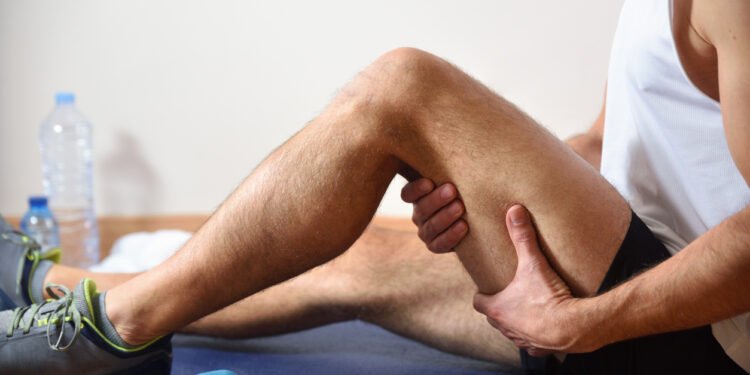If the back of your thigh hurts every time you run, bend, or even sit too long, you may be dealing with hamstring tendonitis. This condition shows up when the tendon connecting your hamstring to your pelvis gets irritated from overuse, poor form, or a sudden stretch. Pain usually builds slowly and worsens over time—especially during motion or after activity.
Treatment often starts with rest, but rest alone isn’t enough. To recover fully and avoid recurring injury, you need targeted movement. The right hamstring tendonitis exercises build strength, reduce tension, and restore mobility. Here are 7 exercises physios trust to actually speed up healing—if you do them right and at the right time.
Why Rehab Exercises Matter in Hamstring Tendonitis Recovery
When the hamstring tendon is inflamed, too much movement causes pain—but no movement leads to weakness and stiffness. That’s why rehab exercises are so important. They give your body the right kind of stress to rebuild tissue without making things worse.
Proper exercises also retrain your movement patterns. Many hamstring injuries start from imbalances—tight hip flexors, weak glutes, or poor posture while running or lifting. Addressing those issues during recovery lowers your chances of hurting the tendon again.
The following exercises focus on flexibility, control, and load tolerance. You won’t find random stretches here—only proven moves used by physical therapists in real treatment plans.
1. Isometric Hamstring Bridge Hold
This low-strain hold helps reduce pain early in recovery. It also reactivates the hamstring without full movement, which is important during the first phase of healing.
- Lie on your back with knees bent and feet flat
- Lift your hips slightly to form a straight line from shoulders to knees
- Hold for 10–20 seconds, then rest
- Repeat for 3 sets of 5–10 reps
Keep the movement small. Don’t push through pain. You should feel gentle tension—not sharp discomfort.
2. Standing Hamstring Stretch (with a Twist)
Most people stretch straight down, but this version targets the upper hamstring more precisely.
- Place one heel on a bench or low chair
- Keep your back straight and lean forward slightly
- Now rotate your upper body toward the leg you’re stretching
- Hold for 30 seconds, then switch sides
Do this after activity, not before. Stretching cold muscles can increase strain.
3. Glute Bridge with Hamstring Emphasis
When the glutes don’t activate properly, the hamstring picks up the slack. This exercise trains both together.
- Lie flat on your back, feet hip-width apart
- Push through your heels to lift your hips off the floor
- Squeeze your glutes and keep your hamstrings engaged
- Lower slowly and repeat 3 sets of 10 reps
To make it harder, try with one leg raised. But only do this once pain has decreased.
4. Seated Hamstring Curl with Resistance Band
This movement adds strength in a controlled way. The seated position limits range and prevents overloading the tendon.
- Sit on a chair and loop a resistance band around your heel
- Anchor the other end under the front leg of the chair
- Pull your heel back, keeping tension in the band
- Hold briefly and return slowly
Do 3 sets of 10–12 reps on each leg. Control is more important than speed.
5. Romanian Deadlifts (Bodyweight or Light Dumbbells)
This strengthens the hamstring through its full range while keeping the back flat and safe.
- Stand with feet hip-width apart
- Keep knees soft and push your hips back
- Lower your torso forward with a straight spine
- Engage the hamstrings as you return to standing
Start with bodyweight only. If there’s no pain, add light weights gradually.
6. Single-Leg Balance with Hip Hinge
This exercise improves balance and strengthens the small stabilizers around the hamstring and hip.
- Stand on one leg, slight bend in the knee
- Hinge forward at the hip, keeping your back flat
- Reach forward with opposite hand for balance
- Return to upright without wobbling
Aim for 3 sets of 8–10 per side. It’s harder than it looks, especially early in recovery.
7. Slow Step-Downs
This mimics functional movements like stairs or hills, where hamstring control is key.
- Stand on a low step
- Slowly lower one foot to the floor while controlling the descent
- Keep hips level and avoid shifting to one side
Do 3 sets of 8 reps per leg. Focus on the lowering part—it builds the most control.
When to Start and How Often to Do These Exercises
These exercises aren’t one-size-fits-all. Start with isometrics and light stretches when the pain is still fresh. As discomfort drops, add strength and balance work. You should never feel sharp pain while exercising. If you do, stop and go back a step.
Here’s a basic timeline most physios follow:
- Phase 1 (Days 1–7): Isometric holds, gentle stretching
- Phase 2 (Week 2–3): Glute bridges, seated curls
- Phase 3 (Week 3+): Romanian deadlifts, step-downs, and advanced moves
Aim to train 3–4 days per week, giving your hamstrings time to rest between sessions.
Common Mistakes That Slow Healing
Doing the right exercises at the wrong time can delay recovery. Here are three mistakes to avoid:
- Stretching too early: Avoid deep hamstring stretches in the first few days—they can increase inflammation
- Pushing through pain: Mild discomfort is okay, but pain during or after means it’s too soon
- Skipping rest days: Muscles repair on off days. Daily workouts can lead to setbacks
Also avoid running, sprinting, or lifting heavy loads until you’re fully pain-free during all phases of rehab.
What If These Exercises Don’t Work?
If the pain lingers or worsens after a few weeks, it’s time to get a second opinion. Some cases of hamstring tendonitis need imaging, deeper analysis of movement patterns, or hands-on therapy. There may also be scar tissue or nerve involvement causing delayed healing.
Don’t wait months hoping it will improve on its own. The longer you delay help, the longer it takes to fully recover.
Conclusion
You don’t need to live with slow-healing hamstring tendonitis. With the right exercises, recovery can be faster, safer, and more complete. Start with low-impact moves, progress gradually, and watch for signs your body is ready to do more.
If your pain isn’t improving or you’re not sure which stage you’re in, expert support makes all the difference. Upswing Health connects you with athletic trainers and orthopedic specialists who guide you from symptom check to full recovery. You’ll get the right plan, faster answers, and the care needed to heal the right way.





